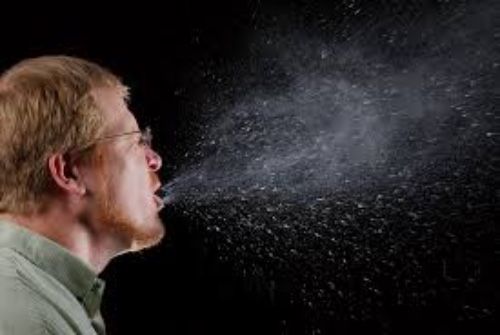Why the Public Should Wear Masks During the COVID-19 Pandemic
Viral droplets from a sneeze can even travel 23 to 27 feet.

There is no question that personal protective equipment (PPE) plays a central role in our strategies to confront the COVID-19 epidemic. Infection Control Today®has extensively covered this topic and experts are in agreement that infection preventionists and healthcare workers need to use N95 masks, goggles and gowns to protect themselves from becoming infected from SARS-CoV-2, the virus which causes COVID-19. Cotton or surgical masks will not afford adequate protection.1
But keeping healthcare workers safe can involve much more. One of the best strategies to avoid contracting the virus is to decrease the number of individuals inflicted with this disease by promoting good public health practices throughout the community. Infection preventionists can play a central role by not only being involved in formal community presentations, but also by networking and being active on social media.
There is no doubt that hand hygiene plays an integral role but to keep the public safe in a pandemic caused by a respiratory virus much more guidance needs to be given. Two other key strategies are social distancing and the wearing of cotton masks by the public.
Guidance for social distancing has largely recommended staying a distance of 6 feet away from others. However, recent evidence has created a number of caveats.
First, under certain conditions the viral droplets can spread greater than 6 feet. For example, researchers at Florida Atlantic University have documented that a cough can travel 12 feet and that droplets can linger in the air for as long as 3 mins.2 A sneeze can even travel farther, 23 to 27 feet.3
Second, loud speech can emit viral particles which linger in the air for 8 to14 minutes4 and researchers have also found that aerosolized viral particles can live in the air for up to 3 hours.5
It is now known that approximately 50% of SARS-CoV-2 positive individuals are asymptomatic or pre-symptomatic carriers and may not even know that they have the virus. Nevertheless, they are a very important source of viral infections in the community, responsible for over 50% of all SARS-CoV-2 transmissions.6
Initially, the public was advised not to wear masks. However, this was before the importance of asymptomatic transmission was known. Recent studies have also underscored the growing importance of person-to-person transmission through the air. Guidance changed. It is now recommended for the public to wear cotton masks. This guidance is not intended to protect the wearer, but to help prevent the wearer from spreading the virus to others if they are an unknown asymptomatic carrier.
When one exhales, coughs or sneezes, the particles are fairly directional and directed into the mask. One study estimated that cloth masks can stop up to 90% of droplets.7 And new modeling is reported to show that if over 80% of the public wears a mask, the epidemic will markedly decrease.8
One needs to remember that time of exposure is also an important factor. Even if up to 90% of viral droplets are stopped by a cloth mask, the wearer can still spread the virus if there is prolonged close contact. For example, hair stylists are of concern.9 If one has close contact with a SARS-CoV-2 positive hair stylist who is wearing a mask for an hour, mathematically this would equate to being exposed to a SARS-CoV-2 positive non-mask wearer for 6 mins. Thus, the possibility of spread is of significant concern.
Because of these findings, over 100 prominent healthcare experts have sent a letter to the United States’ governors to recommend that the public wear fabric masks, and combined with other measures the epidemic’s R0 can be driven below 1, halting the spread of the virus.10 And over 100 countries now recommend the wearing of cloth masks by the public.11 You can obtain a do-it-yourself (DIY) mask on Amazon, or make your own. Video regarding making a simple DIY mask along with mask patterns from both the CDC and John Hopkins can be found here.
References:
(1) Luthra S, Jewett C. Widely Used Surgical Masks Are Putting Health Care Workers At Serious Risk. KHN. April 28, 2020. https://khn.org/news/widely-used-surgical-masks-are-putting-health-care-workers-at-serious-risk/
(2) How far can a cough travel? KCBD(CNN). May 1, 2020. https://www.kcbd.com/2020/05/02/how-far-can-cough-travel/
(3) Bourouiba L. Turbulent Gas Clouds and Respiratory PathogenEmissions Potential Implications for Reducing Transmission of COVID-19. JAMA Network. March 26, 2020. https://jamanetwork.com/journals/jama/fullarticle/2763852
(4) Stadnytskyi V, Bax CE, Bax A,Anfinrud P. The airborne lifetime ofsmall speech droplets and their potential importance in SARS-CoV-2. PNAS. April 10, 2020. transmissionhttps://www.pnas.org/content/early/2020/05/12/2006874117
(5) Van Doremalen N, Morris DH, HolbrookMG, et al. Aerosol and Surface Stability of SARS-CoV-2 asCompared with SARS-CoV-1. NEJM. April 16, 2020. https://www.medscape.com/viewarticle/926929
(6) Tapiwa Ganyani, Cecile Kremer, Dongxuan Chen, Andrea Torneri, Christel Faes, Jacco Wallinga, Niel Hens Estimating the generation interval for COVID-19 based on symptom onset data doi:https://doi.org/10.1101/2020.03.05.20031815 https://www.eurosurveillance.org/content/10.2807/1560-7917.ES.2020.25.17.2000257
(7) Howard J, Huang A, Li Z, et al. Face Masks Against COVID-19: An Evidence Review. Preprints. May 12, 2020. https://www.preprints.org/manuscript/202004.0203/v2
(8) Duncan DE. If 80% of Americans Wore Masks, COVID-19 Infections Would Plummet, NewStudy Says. Vanity Fair. May 8, 2020. https://www.vanityfair.com/news/2020/05/masks-covid-19-infections-would-plummet-new-study-says
(9) Deliso M. 2 hairstylists with COVID-19 may have exposed140 people at salon. ABC News. May 24, 2020. https://abcnews.go.com/US/hairstylists-covid-19-exposed-140-people-salon/story
(10) Over 100 Prominent Health Experts Call For Cloth Mask Requirements. https://masks4all.co/letter-over-100-prominent-health-experts-call-for-cloth-mask-requirements/
(11) Mandatory Mask Advisements by Country https://airtable.com/shreZdkFaYZqfpEqU/tbl5o6qUd54BL9wkw
“Ongoing Assault”: How HHS Layoffs Have Eviscerated Infection Prevention Support Across the Nation
April 1st 2025Mass layoffs at HHS and CDC have gutted critical infection prevention programs, leaving frontline professionals overwhelmed, under-resourced, and desperate to safeguard public health.
Unmasking Long COVID: Dr Noah Greenspan on Recovery, Research Gaps, and the Future of Treatment
March 18th 2025Dr Noah Greenspan discusses the evolving understanding of long COVID, current treatment strategies, diagnostic challenges, and the critical need for research and awareness in post-viral syndromes.